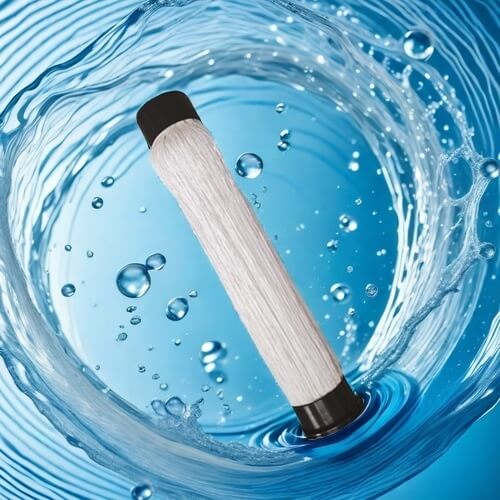MBR membrane treatment process steps
MBR membrane treatment process is an efficient wastewater treatment method that combines membrane separation technology with biological treatment, widely used in the treatment of municipal and industrial wastewater. The following are the main steps of MBR membrane treatment process:
1. Sewage pretreatment
Grille screening: Sewage first passes through a 1-2mm grille to remove larger solid impurities such as tree branches, plastics, etc., in order to protect subsequent equipment.
Regulating pool: The sewage treated by the grid flows into the regulating pool to regulate the water quality and quantity, ensuring the stability of subsequent treatment.
2. Biological reactions
Pump to reactor: The sewage in the regulating tank is pumped into the bioreactor of the MBR system.
Aerobic and anaerobic reactions: In a bioreactor, wastewater passes through aerobic and anaerobic zones, where microorganisms reproduce and degrade organic pollutants in the wastewater under suitable conditions.

3. Membrane separation
Membrane module filtration: The mixed liquid in the bioreactor is separated through membrane modules. The pore size of the membrane is usually between 0.01 and 0.4 microns, which can effectively intercept suspended solids, bacteria, and most organic pollutants, while water molecules pass through the membrane pores smoothly.
Water collection: The clear water after membrane filtration is collected for reuse or discharge.
4. Aeration and cleaning
Aeration: Continuous oxygen supply in the bioreactor to maintain microbial activity.
Backwash: As the running time increases, sludge and impurities accumulate on the membrane surface, and regular backwashing is required to restore the membrane flux and separation performance by flushing the membrane surface with compressed air or clean water flow.
5. Sludge management
Sludge concentration and reflux: Membrane modules effectively retain activated sludge, allowing it to continue working at high concentrations. Excess sludge can be periodically discharged or returned to the bioreactor to maintain system balance.
Summary
The MBR membrane treatment process combines biodegradation and membrane separation technology to achieve efficient and stable sewage treatment effects, and is widely used for the purification and resource utilization of domestic sewage, industrial wastewater, and other types of sewage. Its advantages include small footprint, high effluent quality, and simple operation and maintenance, making it an important choice for modern sewage treatment.
